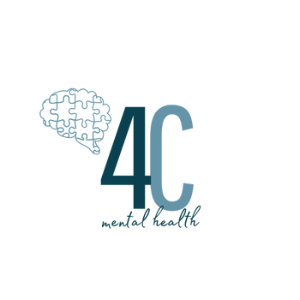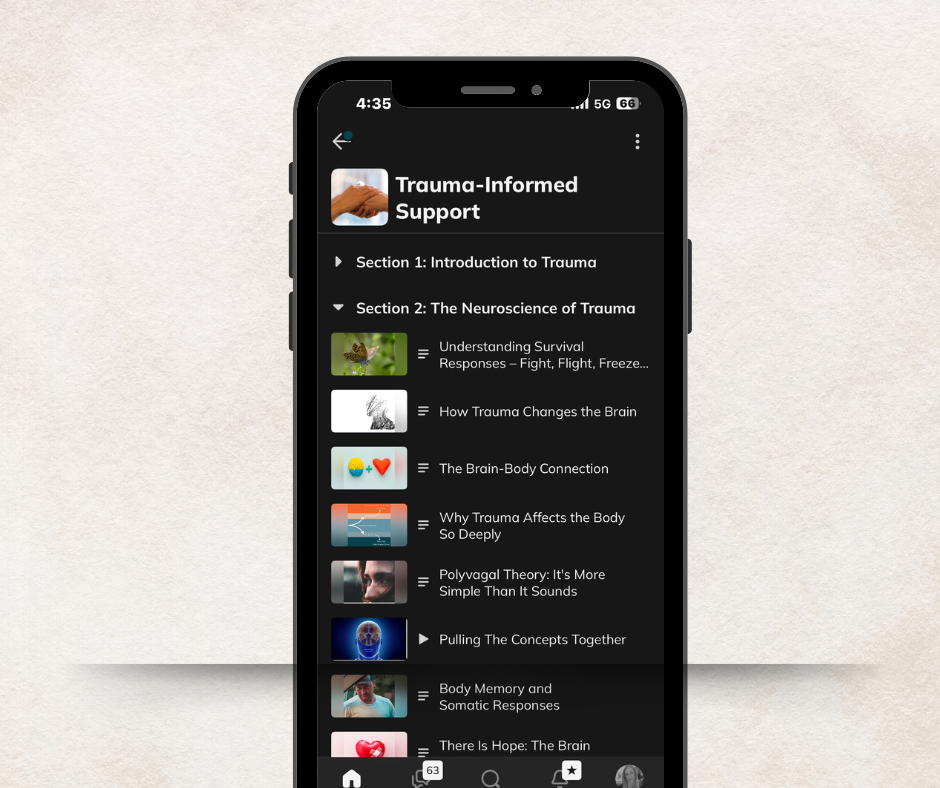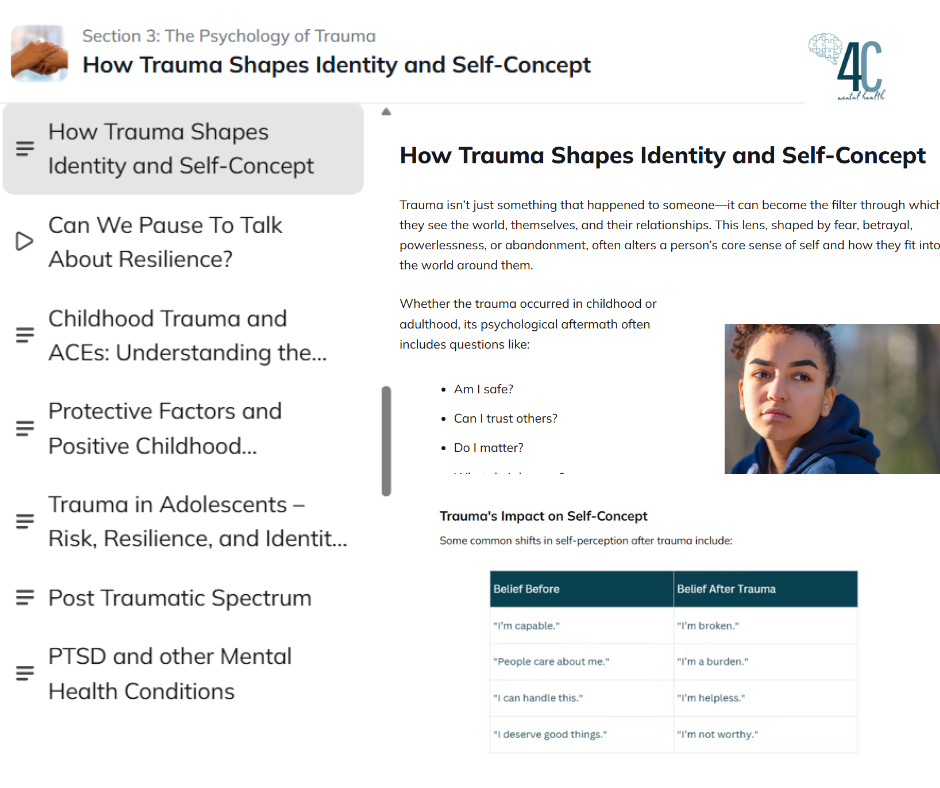
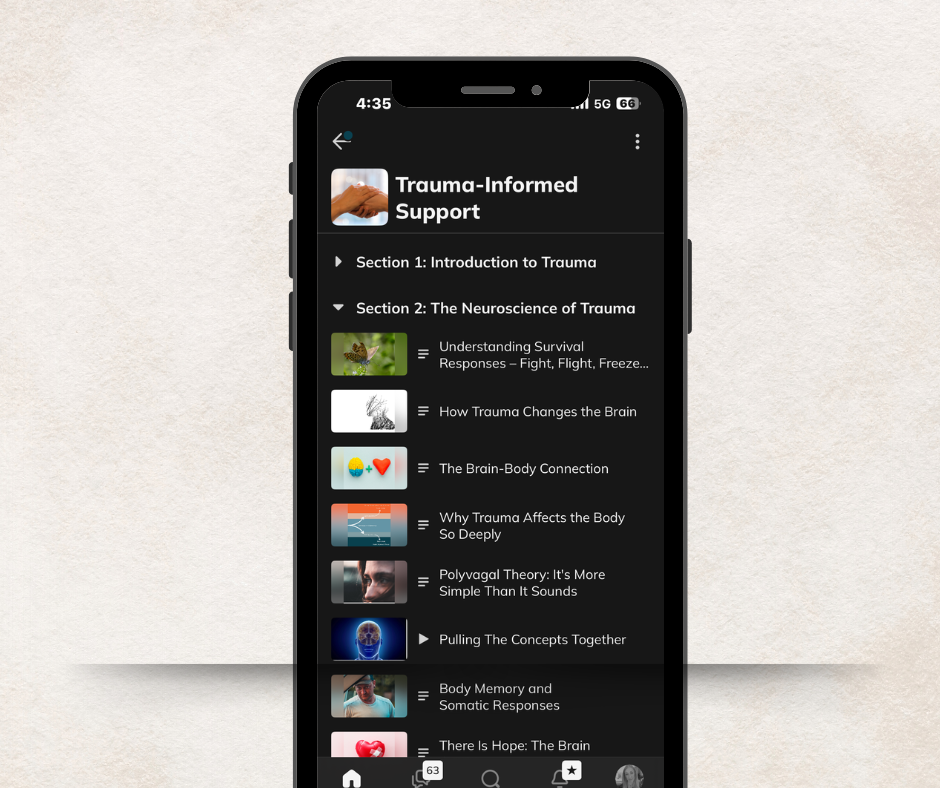
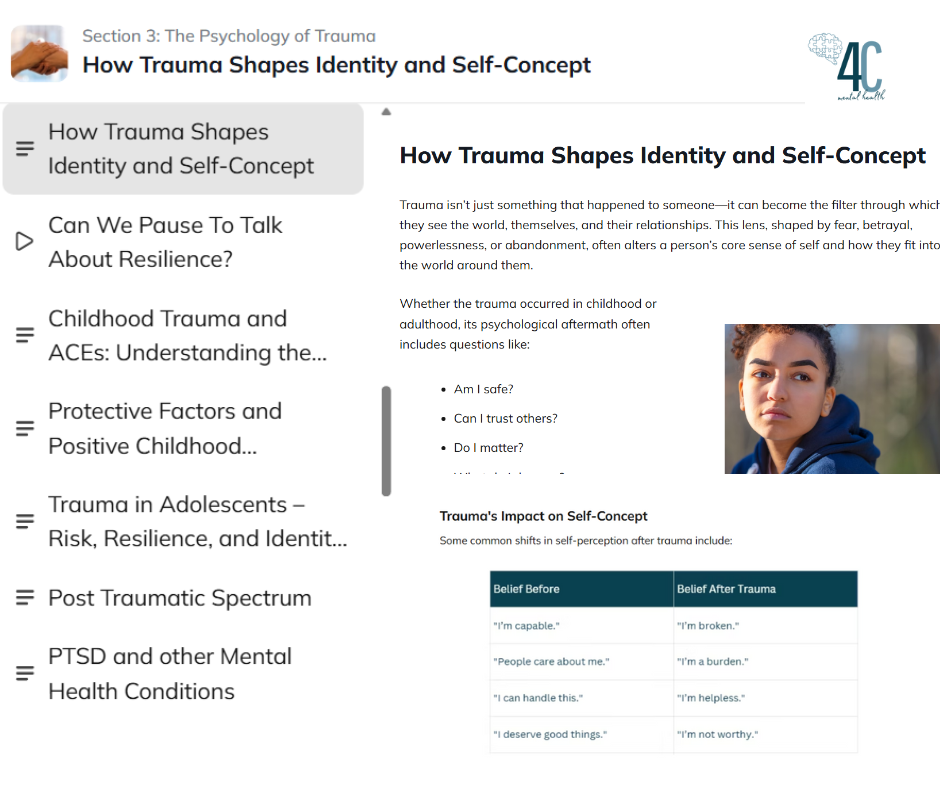
All On-Demand, in Multi-media engaging lessons
Course Outline
Section 1: Introduction to Trauma
In this first section, we’ll cover foundational ideas about trauma—what it is, where it comes from, and why it matters to learn about it with both heart and clarity.
Section 2: The Neuroscience of Trauma
In this section, we’ll explore what trauma actually does to the brain and nervous system. You’ll learn how our most basic survival systems—fight, flight, freeze, and fawn—kick in to protect us, and how those systems can get stuck in overdrive long after the danger has passed.
We’ll break down how trauma impacts three key areas of the brain:
- The amygdala (our alarm system)
- The hippocampus (our memory filer)
- The prefrontal cortex (our reasoning and regulation center)
We’ll also introduce the basics of polyvagal theory, which helps explain why trauma survivors may feel hijacked by panic, disconnection, or shutdown—without choosing it.
Most importantly, we’ll unpack this truth:
Trauma is not just a memory. It’s a felt experience, often stored in the body even when the mind can’t fully explain it.
By the end of this section, you’ll better understand the why behind trauma responses—and be more equipped to respond with compassion, not confusion.
Section 3: The Psychology of Trauma
How Trauma Shapes Identity, Relationships, and the Way We See the World
Trauma can shift how we think, feel, relate, and exist. It can distort a person’s sense of self, fracture trust in others, and create a world that feels permanently unsafe—even long after the danger has passed.
This section explores the psychological layers of trauma, focusing on how it affects our core beliefs, identity, attachment patterns, and interpersonal behavior. You’ll also learn how the dose of trauma—the frequency, intensity, and timing—affects long-term mental and emotional functioning.
Key ideas we’ll explore:
- The Fawn Response and other relational survival strategies
- Attachment wounds and how early trauma shapes adult relationships
- The concept of a "trauma lens": how people come to interpret the world around them
- Dose matters: why multiple or early traumas are harder to shake
- The emotional toll of betrayal trauma, stigma, and systemic invalidation
- How trauma alters a person’s inner voice, boundaries, and self-worth
Section 4: Community-Level Trauma
This section invites you to widen your lens. Here, we explore how trauma is shaped—and sometimes sustained—by the world we live in: by structural injustice, cultural expectations, and the stigmas that silence survivors. Understanding these layers helps us move from individual support to systemic healing—and ensures that no one is left behind simply because their pain doesn’t fit the mold.
Section 5: From Understanding to Action
In this next section, we’ll move from understanding trauma to showing up for others in a trauma-informed way.
You don’t have to be a therapist to make a difference.
You just need a few key tools, and the ability to meet people with presence, compassion, and skill.
Section 6: Trauma-Informed Toolkit: Practical Tools for Support and Resilience
This section is your Toolkit—a collection of simple, powerful techniques that anyone can use to:
- Regulate emotions during moments of overwhelm
- Build distress tolerance when things can’t immediately be changed
- Strengthen resilience through daily habits and internal resources
- Offer effective, trauma-informed support to others
- Reclaim a sense of safety, agency, and empowerment
These tools aren’t just for “in the moment” crisis management. They’re also about long-term healing—offering people ways to reconnect with their bodies, shift their stories, and move toward growth. Whether you’re using them for yourself or offering them to someone else, these techniques are meant to meet people where they are.
Some tools are body-based, others are conversation-based. Some are rooted in neuroscience, others come from ancient traditions. All are focused on building capacity—not control. We’re not trying to stop feelings from happening. We’re learning how to move through them, safely and skillfully.
